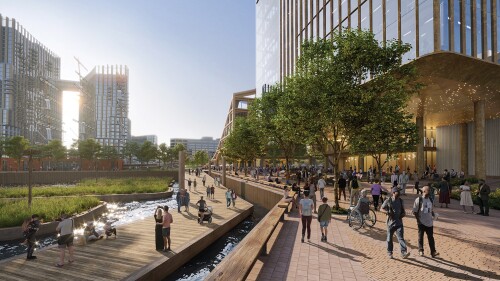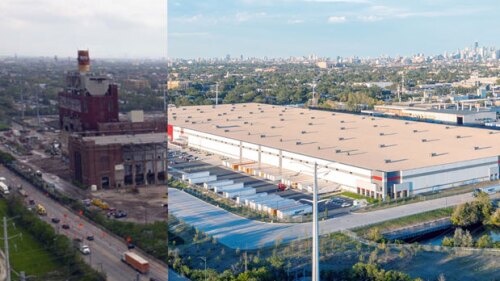Urban and Regional Planning
As 2025 draws to a close, the year’s most-read articles in Urban Land magazine reflect a pivotal moment in urban development. Themes reflected this year include resilience against climate-driven disasters, ambitious waterfront and downtown revitalizations, stabilizing construction economics, entertainment-anchored urban renewal, and innovative housing strategies. These stories also capture the industry’s focus on adaptive, inclusive, and forward-thinking land use.
As it contends with the same post-pandemic challenges that confront other urban cores nationwide, downtown Denver is leveraging public/private partnerships to bring back vitality. At the ULI 2025 Spring Meeting in Denver, Colorado, five leaders involved with the city’s revitalization shared recent successes and plans for Denver’s future.
The setup is printed on the game board: “The empty piece of land was previously occupied by a large shopping mall. After years of decline, the mall was eventually closed and left abandoned. Its closure created a clean slate—free of historical preservation concerns and extensive land remediation—offering a blank canvas for the future development of this community.”
Yesterday, more than 400 commercial real estate professionals and elected officials gathered at the National Building Museum for the third annual Future Forum, a regional conference for public and private-sector leaders.
Aberdeen, South Dakota’s rich history as a bustling hub with a vibrant downtown provides a strong foundation for revitalization. Historic photos of Main Street from the early 1900s could easily be mistaken for scenes from Brooklyn, New York, of the same era. Understanding why the town moved away from this dynamic core, and lost its historical vibrancy, is essential.
San Francisco can create a more commercially vibrant and socially inclusive downtown that attracts a diverse range of industries and employers, advances housing attainability, and promotes stronger leadership, according to findings released by ULI.
Ethnic and cultural diversity, combined with a reputation as a welcoming place for immigrants, has long been a strength of the Greater Toronto Area—and it has also influenced the city’s development, panelists cautioned at ULI’s 2023 Spring Meeting.
Urbanizing suburbia is something many developers are looking to achieve, adding density as land prices rise. San Diego and its surrounding area have been prime locations for use of this strategy. On Thursday, a panel at the ULI Spring Meeting in San Diego explained the thought process and how to execute on this goal, focusing in particular on life sciences architecture.
Sponsored Content:HRP’s Chicago transformation is an environmental feat. Now they want to make sustainability an industry standard.
Khoo Teng Chye, who is on the faculty of Engineering and the School of Design and Environment at the National University of Singapore, has been appointed chair of ULI Asia Pacific. Khoo, a fellow and former executive director at the Centre for Liveable Cities, began his three-year term in July, succeeding Nicholas Brooke, chairman of Professional Property Services Limited in Hong Kong.



![IMG_2896[1].JPG](https://cdn-ul.uli.org/dims4/default/a6f9030/2147483647/strip/true/crop/4032x2266+0+7/resize/500x281!/quality/90/?url=https%3A%2F%2Fk2-prod-uli.s3.us-east-1.amazonaws.com%2Fbrightspot%2F80%2F39%2F205699104776b5d89f410b5cd438%2Fimg-28961.JPG)
![IMG_9889[1].JPG](https://cdn-ul.uli.org/dims4/default/cffa1ef/2147483647/strip/true/crop/5712x3210+0+537/resize/500x281!/quality/90/?url=https%3A%2F%2Fk2-prod-uli.s3.us-east-1.amazonaws.com%2Fbrightspot%2F44%2F9f%2F1ad4a6684815aa39dacc30bf931a%2Fimg-98891.JPG)


